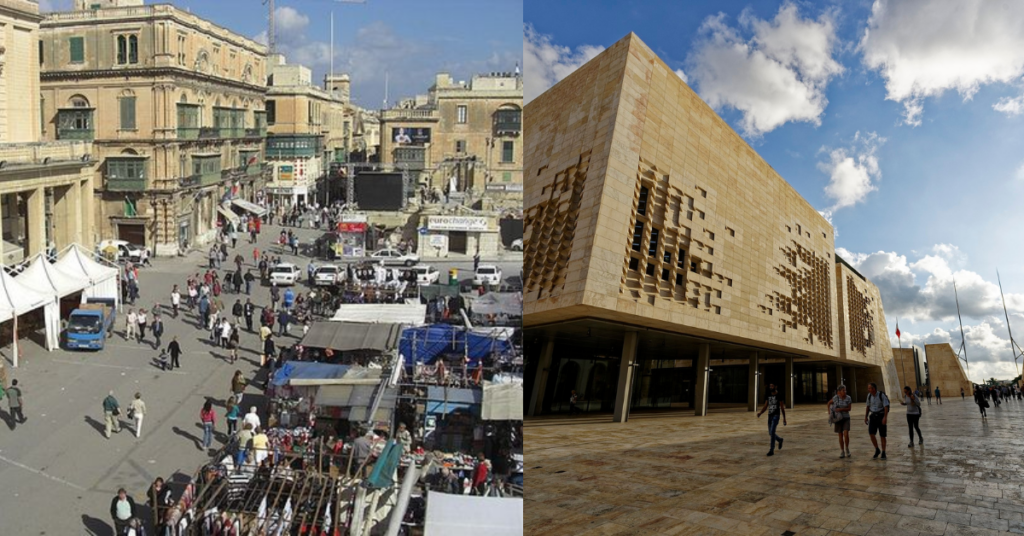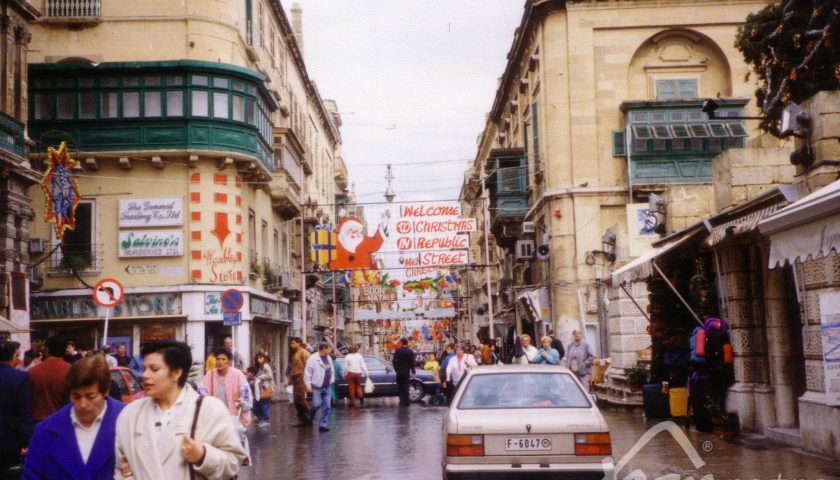Valletta’s Pedestrianisation: A Model For Other Maltese Towns

Valletta, the capital city of Malta, was once a heavily congested area full of cars and pollution.
However, in recent years, the city has undergone a transformation with pedestrianisation strategies being implemented well and effectively.
This change has brought about numerous benefits to the city and can be a prime example of what other towns and villages in Malta could become with similar changes.
The pedestrianisation of Valletta has significantly reduced traffic in the area, making it much more pedestrian-friendly. This has led to a more pleasant and enjoyable experience for visitors and residents alike, as they can walk around the city without worrying about the dangers of traffic.
It has also improved air quality and reduced noise pollution, making the city a healthier and more pleasant place to be.
One of the most notable changes in Valletta is the pedestrianisation of the Triton Fountain area, right before the entrance to the city.
This landmark zone is now a beautiful public space where people can sit, relax, and enjoy the surroundings.
The closure of the fountain to traffic has also helped to reduce congestion in the area and has allowed for more space to be dedicated to pedestrians.
Despite concerns that pedestrianisation would lead to a decline in business, the opposite has been true.
With more space dedicated to pedestrians, there has been an increase in foot traffic, which has in turn led to an increase in business.
The creation of new public spaces has also provided opportunities for new businesses to open, creating a more vibrant and diverse city.

The success of Valletta’s pedestrianisation has shown that concerns often associated with such strategies, such as a decrease in business or accessibility can be solved.
With allocated delivery times and the implementation of residential parkings, these issues have been addressed and overcome in Valletta’s case.
Pedestrianisation can lead to numerous benefits, such as reducing pollution, improving air quality, creating more public spaces, and improving the overall quality of life in a city.
Other towns and villages in Malta could learn from Valletta’s example and implement similar strategies to improve the quality of life for their residents and visitors.

By reducing traffic and creating more pedestrian-friendly spaces, these areas can become more enjoyable and pleasant places to be.
It is essential to remember that change can be challenging, but if done right, it can lead to positive results for everyone involved.
Valletta’s transformation from a traffic-heavy area to a pedestrian-friendly city is an excellent example of the benefits of pedestrianisation.
With the upgrade of the Triton Fountain zone and the construction of the new Parliament building on what was once just another car park, Valletta has shown that concerns linked with pedestrianisation can be overcome and there is an incredible opportunity to make the towns and villages of Malta more liveable and create a far better resident experience.
Share this story if you want to see more towns become pedestrianised across Malta
